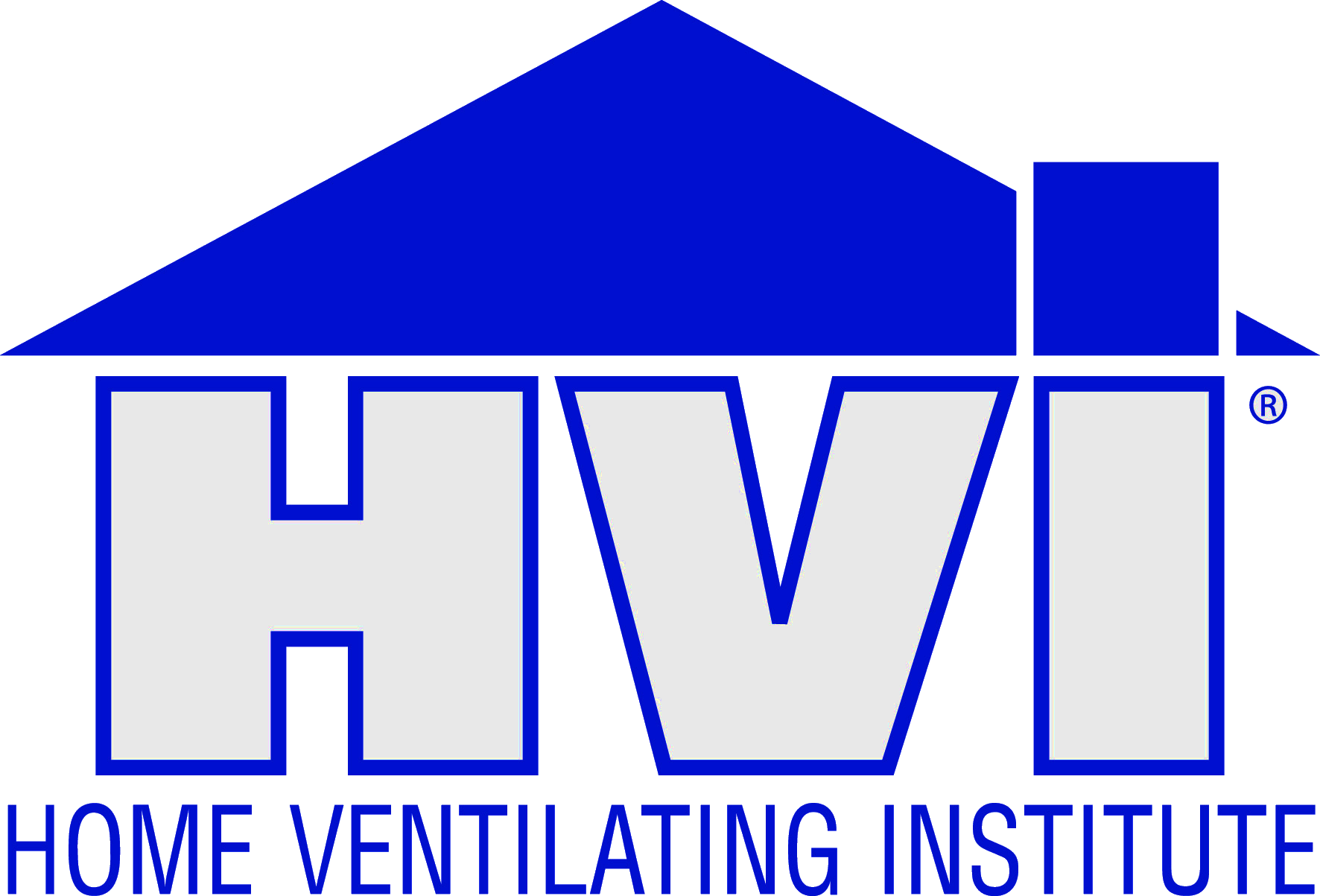Episode 201: Form vs. Function
To begin Season 1, Grace and Corbett drive the #TinyLab to a big, beautiful, freshly renovated house in Chicago to help their client Ava solve her complex and unexpected issues with air quality and comfort.
Episode 201: Form vs. Function
Grace and Corbett reflect on their origin story and what has motivated them to take this next big step into designing and building their own home, with tuned performance as the driving factor. Visit a finished high performance home, to see what it can look and feel like. Selection of materials is explored here, as well as the ways geometry, layout, and aesthetics affect performance.
Featuring architects Chris and Jodi Laumer-Giddens, savvy homeowner Amel Korjenic, Michigan Habitat for Humanity Director Thom Phillips, and Matt Risinger of The Build Show.
DIVE DEEPER WITH THESE RESOURCES:
TRANSCRIPT:
Welcome back to Home Diagnosis. If you watched Season One, you saw us travel around the US in the TinyLab, helping homeowners diagnose mystery problems in their homes and prescribe proven solutions to fix them.
In this second season, we're going much bigger. Right over there we'll be building our forever home, a 3000 square foot high performance house tuned to perform exactly like our family wants. Like the TinyLab, we're designing and building it ourselves with my parents, and we'll be showing you the whole fascinating process.
We heard from hundreds of our season one viewers from all over the world wanting to understand more. So in season two, we're going to dig deep into the science of home performance and introduce you to some groundbreaking new indoor chemistry and microbiology research.
Let's start at the beginning. Every home starts out as an idea which becomes a design. Having a plan is essential, but most plans today don't design for control of heat, air moisture and indoor pollution, which is why this show was created: to help you make more informed decisions about your home as a system.
Of course, as we plan for our new home, we're incorporating systems thinking. Here's how the plan started…
So, because we've been designing this house for the past several years while we were even building this thing and touring it, we were dreaming of what this house was going to be like because obviously this was always a finite living situation.
So after coming up with all the ideas and building the 3D model, that is what we have got laid out in the plans here. So this is what we're submitting for permit.
So Corbett and I worked on this for months in 3D modeling and just dreaming what we could do. And eventually we got it down onto paper. But then we had to hire an architect to come in and really kind of move and place the walls and space everything out the way that it should be for typical flow.
We're not thinking about interior design, really.
Yeah, I mean, when you're dreaming up your own house and you've never built them before, aside from a 200 square foot, sometimes you're like, Yeah, this feels good for a hallway.
And so the architect, Jodi, made a bunch of good suggestions. She moved our front door. She moved the laundry room. She changed the stair layout was pretty cool. She rearranged the master suite to and all those changes, we just accepted whole hog and said, Yep, that's it.
Quite right in our designs, we have some functional goals that were really important to us. Both Corbett and I are musicians and we've always dreamed of having a proper recording space. But we also live very close to an airport.
So we wanted it to be quiet and we happened to notice when we built this (TinyLab), it was amazing to us how quiet it was when you built something airtight. Aside from the dust control and all the other benefits that you already know that we get out of this, the air tightness can be achieved a lot easier
since we're building this ourselves if we keep the shape simple. We knew that I'm not a very good builder, so we wanted to keep it reasonable for me to be able to tackle, especially with our parents being some of our laborers.
So the shape was always very simple, and what we did is kind of change the shape over the couple of years that we were working on it. Sometimes it was two houses with a studio and a living space.
We finally melded it because of permits and a whole bunch of reasons. But once we put it together, we realized that there was a type of building that resembled this. It's called a monitor barn. So now we just call it a monitor barn shape, even though it was something that kind of came out of the organic workaround with the way the house was laid out.
And then, of course, we also had to think about our landscaping and how we wanted the house to actually fit on the property and and it naturally fit if we just kind of shifted one part back and one part forward on the monitor barn.
And again, it ends up creating a more interesting dynamic to the house, but still keeps a really simple shape which gets us back to our functional goals.
And one thing that was really important to us, we wanted to work with the land. So where the trees are, where the driveway already is, where the woods are located, that all kind of spoke to us, that we didn't want to bring in a plan and just say, Plop.
This is where the house goes. We wanted to be able to look at it and kind of shift things around and change things about the house layout, the decks, et cetera, so that it would make sense with what was already here because we didn't want to go around chopping down all the trees.
So in virtual reality, we can build this house, and the simplest thing we can do is show everybody what it's going to look like. And so we can spin it around, and that's all wonderful, yay. What we're really interested in now is this part of it, which is where we can really start to look at the implications of
changing stuff about the house so we can see the volume of the space. We can split the house up into the living space in the music studio, which is going to be separate. We can break up the rooms and see how much space there is going to be per room so that we know how many BTUs of heat or cool need to be supplied to each of those rooms.
I mean, when you're putting it all together, this really is your worksheet, your math worksheet, basically, when you're trying to understand the science of a home.
And especially for people who are pretty novice at this home building stuff, this is your chance to do a rough draft of a house and buy a bunch of plywood and install it and say, Nope, that doesn't work.
We need to turn it a different way to make sure to maximize the efficiency of the materials that we're buying. So we've built all the walls. We know how many sheets of plywood need to be there, what kind of cuts are going to be there.
We're also building the framing plan inside the computer so that every cut made on the actual wood of the walls and the ceiling and the floors are going to be computer generated cuts.
So here is the spinal cord of our house.
We can see that it's big enough, that it's going to be laid out the right way, before we start pulling the trigger and spending money and time actually trying to build this thing.
And the great thing about this technology is it's so accessible. There's so many different ways to do it, even, that are free and fun. Most people are familiar with home inspections and inspectors job is to investigate the static parts of the building, things built into the home: construction details, HVAC equipment, type and age, shape and condition of the structure.
And even when an inspection points out all the safety or durability hazards that should be improved, it can only go so far because it's all about the static stuff that can be seen. Home performance is about dynamics, things that change flow to investigate those things, how the house feels, smells and sounds when it's dynamically working, you need performance testing.
Every home is a system just like a body. You can't see your heart, but you know it's there and a doctor can use a blood pressure cuff and a stethoscope to measure your heart's performance. The diagnostic tools we use in Home Diagnosis help us find the invisible heat, the invisible air, the invisible moisture and pollutants that define your home's performance.
So look around you. What might seem like a hodgepodge of furniture and products is actually an interacting, interdependent system of invisible dynamics that can be tested and tuned. Stop guessing. Proof is possible. Ask for it.
The planning for any build is the most critical element, right? If you want certain outcomes, you can't start with a plan and then say, Hey, we're going to as we go along, we're going to do this, this and this. First of all, it's outrageously expensive because the minute you change something, you start getting change orders and nobody's
going to do anything extra for free. It drags out the build schedule. We've talked many times about the house being a system. Any time you change one part of that system, you could be affecting so many other parts of that system, right?
And so really, the only way to to build a house well is to think about all those things before you put a hole in the ground. You think about all those things before you put pencil to paper, even.
You cannot take a standard house plan and make it a High-Performance house on the job site because it's got, you know, everybody's going to do it the way they've always done it. So you're also not going to be able to train every one of those trades on how you want it done.
What I do is I engineer that opportunity to mess things up out of the plan. I give enough detail so that, you know, you're going to get kind of the objective you want, almost regardless of who's there.
Of course, we wanted to see a house that had turned out exactly as great as it was on paper, and had the right team to design and build it. Chris and Jodi!
Hey.
This is a beautiful house.
Thank you very much.
Thanks for having us.
So, Jodi, to us, performance means the control of physics and chemistry. We gave our plans to you to make it High Performance in a different way. What does performance mean to you?
That has more to do with the how are you going to use the space and that it serves all your needs as far as circulation, access to the outside, relationships of different spaces. So for your house, we didn't change the footprint.
You guys already knew how big you wanted it to be, where you're going to put it on the property. But the inside was just kind of big open spaces, and that might look good on paper, but you needed to find spaces a little bit more than that.
That doesn't necessarily have to be with walls. Yours didn't really have an entry. You just open the door and you were in a big open space and you want to have some transition spaces as you move through the house.
So we aim to organize the space so that it works the best for your family.
So this home is not only beautiful, it's located in a beautiful, historic district here in Atlanta. Did that pose any problems? I know a lot of historic communities have certain rules.
Well, this is one of the largest historic districts in Atlanta, and they have some pretty specific guidelines to follow. They're really trying hard to maintain the feel of the neighborhood- that's really important. But of course, lifestyles and expectations have changed over the years.
There are so many opportunities when you're when you're faced with all of these restrictions and they're saying, Well, we want to design it like it was back in the day, and their lifestyles back then were front porch and big, huge chimneys and fireplaces that just
isn't now. This family, especially, is not from that time, they're not from this place. This is consistent with that. But we're living in the 2000s now.
Can we go inside and take a look?
Yeah, let's go meet Ella and Amel.
All right.
This is a beautiful house. You guys did a really good job of hiding all the high performance stuff that I know that you did on this house because it looks like just a house. You would never know that it was different.
Yeah. Incorporating the performance and the efficiency is just as important as making it feel just like a normal place and not like a spaceship.
Let's go and check out the kitchen. You go find your favorite room.
All right, sounds good.
So, Jodi, you know, I am super excited that my new kitchen will literally be the size of the current house I live in. But something that's very important in a tiny lab is our vent hood. And here we've got a gorgeous one.
It's on an outside wall. So it vents directly out. So the shorter the run on that, the more efficient it is. But the other thing most range hoods are undersized. Usually a range hood is in here somewhere, and only comes out about two thirds of the way.
Yeah. Well, what does that do for the front burners?
And the open shelving design here in the kitchen? That's something that I really want to do too, and somebody the other day said, Well, I hope you're ready to clean all up on the top because you're going to get grease all over your plates and cups.
But I think we forget to turn it on every single time, every time cook, right? I'm not interested in cleaning...
Cleaning the dishes after they've been cleaned? That's right. All that should be captured and taken out. And then you don't have the particulates landing inside the kitchen.
So we do all these HVAC design calculations in the computer. We come up with a design and a plan and everything, and then the HVAC guy shows up on site. They're supposed to put stuff in and the plan is changed because the architect gave the plans to a builder and where the furnace was supposed to go has been reclaimed into the master closet. And so where are we supposed to put this stuff? So you solved that here.
We did. We've framed out a hole in the structure just like you would with a stair. And then put little two by fours really close together above it to create the floor above. And then the eight inch tall air handler that serves this floor sits right up in there.
And now we have access to it. We can get to it, we can clean the filter, we can make sure you're maintaining all that stuff. And also it's running right now.
It is running right now. They're very quiet systems.
And because it's a louvered closet door essentially, it is also the return grill where the air is getting sucked up into the system, correct? So I can't shove a couch up against it like you would in a normal house and screw up the system.
Yeah, that's amazing. Nice work.
Thank you.
Grace, meet the homeowner. This is Amel. Ella couldn't make it because she's taking the kids to school.
Oh, that's too bad. OK, so you and Ella have been here for three years. How do you feel about it?
We love it. We love it. We love the neighborhood. We wanted to build a house that's going to be fitting within the neighborhood. But also we wanted the pleasures of living in an efficient house that's also a healthier home for the homeowner and also for our two small kids that we have.
You grew up in Bosnia, right?
Yeah. So one of the big things we did when we first came in over here is honestly, you have that concept in your head of, I'm going to huff and puff and blow it away. Kind of felt like it's built like a stick house
and there's no way it can be as good as building with reinforced concrete. Let's do a really socialist kind of a way of constructing it then and make sure that nobody can hear you and it just gets really solid. But then again, there's drawbacks of both.
It's hard to change concrete buildings...
Well, that's true. And then as time progresses over here, time progresses over there, they're retrofitting. So by nature, I like to go into details of everything. Whatever I do, it doesn't matter, I'm overanalyzing everything.
So of course, biggest decision in your life, you're going to really overanalyze it. So what I did is I went online, tried to do my research, tried to be as informed as I can, and I found a builder that was doing some stuff and contacted that builder.
And at the same time, I found some of the videos and articles on how to do energy efficiency by a different person. Well, it so happened once I contacted this person and they put me in contact the first person as well.
So it was the only two people at that time that were kind of doing energy efficiency in Georgia. So that's how I got to meet Chris and Jodi, and that's how the entire thing got started. Of course, because it's your house you want to be, sky's the limit.
Like, I want it to be the best of the time, nothing less than that. But then, of course, the financials come into play. And then also, to be honest with you, it wasn't as much the financial as it was 'who can do it?'
How did you find a builder who could do what you were asking with the plans?
To be honest, I can't even tell you how many interviews we had with different builders...
How did you know that a builder didn't know how to do it, was maybe BS'ing you?
To be honest with you, it would be very difficult to BS me. I'm not trying to brag, but I have a lot of compiled knowledge through going through everything through the entire experience of researching how the houses work, and how the walls work, and what to do
with the envelope, what kind of windows, everything else. And then in conversation, you can tell if somebody knows, you know. And, it is true too, if somebody doesn't know what they're talking about, you can tell, especially when it came to pricing and stuff.
If somebody tries to lowball the estimate on how much it would be, you know they don't know what they're talking about.
What kind of responses were you getting, were people running away? Or would they say, Oh, yeah, totally. No problem.
Well, first of all, they'd be like, why? Why? Why would you do that kind of thing? And then when you were trying to explain it to them, it would be, of course, kind of over their heads.
And they'd be like, Sure, well, we haven't done it before, so it's going to cost extra. And then how much extra? They just throw a number out that you would just say there's no way. Trying to scare you off. That's pretty much it.
I love that you know so much about this. Do you have any advice for some of our viewers who might be starting out on their knowledge about all this stuff? Who want to follow your lead?
Do your research, make sure that you know what your limits are. What what is your goal? Is it the clean air? Is it a low monthly bill? Is it overall comfort in the house? I mean, you just have to know which check boxes are the ones that make the cut,
which ones don't make the cut, and then where do you make those sacrifices? But you just have to know what you're looking for. Main thing again, do your research.
Right.
Do research as much as you can, and then talk to people that know what they're talking about.
Well, thank you so much for letting us be in your house.
And thank you for building this.
Appreciate it. Thanks so much.
Thanks for having us. Thanks.
Home Diagnosis shows that in every home, there's one thing that impacts how it feels, smells and sounds more than anything else: the skin. Just like your own skin, its job is to keep inside stuff inside and keep weather and contaminants out of your home.
Your home's skin is made of the air tightness and insulation layers. That's usually two different things, and they should usually be touching each other. They should certainly never have big holes in them, but often they do, and we're about to show you how to spot some of them yourself.
Since air leaks right through most insulation, pay attention to air leakage first. You know that warm air rises and cool air sinks. So the two most vital places to control air leakage is the top floor ceiling and the bottom most floor.
Your floor is probably pretty flat, which is a simple shape, but the top floor ceiling- not so simple.
Ever felt hot in a top floor room in summer, even if the lower floors are nice and cool? Chances are it has nothing to do with air conditioning. It's because of holes in the skin of the house over your head.
So take a walk around the top floor and keep your eye out for places where the ceiling height changes from room to room. Wherever this happens, there's probably air leakage and insulation issues. Any ducts that plug into the ceiling are even more likely to leak air, since the duct work is now in the highest point in the home.
The more recessed lights, tray ceilings, dormers and turrets a home has up top, the more concerned you should be about testing and improving the performance dynamics. Start at the top, and all else follows.
So we're talking a lot about form versus function. And I think it bears mentioning that just because you have one doesn't mean you have the other. So when you're talking about performance and architecture and trying to meld the two, what does that mean to you guys as architects?
You know, a homeowner needs a home for shelter and shelter doesn't just mean from the elements. It means you've got to find a place to live comfortably, live healthy and for a very long time. A lot of times our clients have their list, their sort of wish list of, Hey, I want solar panels, I want this type of insulation.
I want that. And that to them means energy efficiency. And what we always present to them is that we need to design the house to last a really long time. And so we introduce this idea of durability. And with durability comes efficiency in both the floor plan and then the building and the building enclosure.
The systems always come after we've designed the house. You've probably heard of process before products. The process of designing the house to be efficient, to be situated on the lot, with overhangs, to make sure that we're protecting the inside from the heat and the prevailing winds and things like that, all of that comes into play first.
Then we design the assemblies to counter the conditions, the temperatures and the moisture. The result of that is something efficient. And then you design the systems to condition the home to combat whatever heat does get in or or leaves the house.
Efficiency can be as simple as the size of the footprint, so the less house, the less energy it consumes. Yes. So it's a trend, especially in America: more is better.
To build better, we need to build smaller. You know, if you have a a budget of, you know, just throw some number out: $100,000. If you build a small house with $100,000 or a big house that hundred thousand dollars...
You can build either one, but just generally speaking, the small house can be built better with whatever pool of money you have to spend, than the very large house. And I know you guys have lived in smaller before and shockingly, your lifestyle, your happiness probably didn't go dramatically down because you had 50% or 100% less space than the average American has.
You know, my family, I have a family of six plus a very large Labrador living in 2200 square feet, and it's plenty of space for us.
We hit the road in our TinyLab when my oldest daughter was just six weeks, which meant her car seat was important. And I researched the safety features, of course, but I also started to wonder what these things were made of.
I mean, our daughter was going to spend hours in this car seat, which was going to heat up in a parked truck and release chemicals from that heat. Here I was, swaddling my daughter an organic cotton- so how could I get a car seat without considering the materials?
Now, as we build a bigger house, what we bring into our home is equally important. And so just like choosing a nontoxic car seat, there are lots of ways to educate yourself about these materials. And there are some companies that are even accepting the challenge ahead of regulation to make home furnishings and building materials safe for you and your family.
And if you don't know where to start or what to consider, Home Diagnosis is a great place to begin. As we build, this house will keep coming back to indoor air quality. The important thing to remember is that what you bring into your home is what you'll be living with and breathing every day.
Now you see how we can marry form and function, and design a home that's relatively simple and affordable to build.
Performance-tuned homes are for everyone. But they do not happen by accident, especially in today's fast evolving world of building codes and new materials and technologies. In the next episode, we'll dive into those complexities as we break ground on our new house.
To learn more about how you can tune the performance of your home, new or old, visit HomeDiagnosis.TV.
Home Diagnosis is made possible by support from the Alfred P. Sloan Foundation,
by Fantech, 'Breathe easy,'
by Broan-NuTone, 'Come home to fresh air,'
by Aprilaire, 'Everyone deserves healthy air,'
by AirCycler, Retrotec, and Santa Fe Dehumidifiers,
by generous support from these underwriters
and by viewers like you.

















